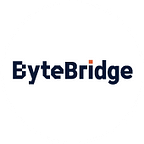How Data Annotation Service Empowers Autonomous Logistics?
Automatic Driving Entered the Second Half in 2021
Many people say that automatic driving entered the second half in 2021, and they talk about the commercial operation and large-scale promotion. However, as Wu Gansha, co-founder, chairman, and CEO of UISEE technology said,“ the mass listing is assisted driving because the error cost of assisted driving is controllable: there is a driver in the car”.
“If it is driverless, you must turn today’s open, borderless and non-convergent problems into problems with boundaries and convergence, otherwise it is impossible to achieve driverless.”
The other side of the convergence boundary is business expansion, especially for enterprises focusing on Robotaxi.
Due to the Impact of the Epidemic, the Investment in Autonomous Logistics is Obviously More Popular
Roland Berger partner Wu Zhao told that the advantages of the commercial vehicle scene are gradually showing up. Compared with passenger cars, the logistics application field is relatively limited and the task purpose is clear.
It is easier to realize automatic driving under the existing condition, and it is relatively less influenced in terms of laws and regulations and their impact on urban life. Logistics vehicles are a very good point to promote the commercialization of automatic driving.
Earlier, Waymo, an autonomous driving company under Google, and Pony. AI, a Chinese driverless company, has both crossed the border from driverless taxis to autonomous logistics.
Read more: Introduction of Giant Self-driving Company Waymo
According to LI, vice president of Pony.ai and head of PonyTron, trunk logistics will become the key application scenario of PonyTron. With the opening of local policies, high-speed and fast scenes have been gradually incorporated into the scope of local road tests. In the future, it will have the opportunity to have the road test in Daxing Airport Expressway, Beijing Taiwan expressway, Beijing Tianjin Expressway, and other sections.
On the other hand, many Robotaxi startups think they can overpower the others.
Han Xu, CEO of WeRide, said this year, “Whoever masters the real automatic driving platform technology in the future will be the king. Automatic driving companies with this strong technical capability will be able to implement dimensional collapse.
In his opinion, today’s enterprises in low-speed and slow logistics parks are likely to be hit by a strong L4 automatic driving company occupying the strategic market in the next 3–5 years.
To Some Extent, Dimensional Collapse Exists
“ Automatic driving technology is nothing more than perception, decision-making, and execution. Whether it is open roads or enclosed parks, passenger cars, or commercial vehicles, general software and algorithms still exist.
“For us, the cost of technology migration is not high. Software and algorithms such as perception, fusion, computing, and decision-making can be shared to a large extent.” The management of a company focusing on ADAS said frankly that the level of executive control is what they need to further learn and improve.
Meanwhile, Yu Sujie, vice president of commercial vehicle control system division of ZF group (ZF Friedrichshafen AG)and President of the Asia Pacific region, told that thanks to the complete technical system, ZF’s strategy is more flexible, and its products will cover higher-level automatic driving. “We can be a supplier of parts, a supplier of the subsystem, or a supplier of a module. We can also provide only software services or solutions for some application scenarios.”
However, Dimensional Collapse is Not So Easy
Limited scenarios also have barriers. This is not only a technical issue. Some executives of Robotaxi startups told that there is no problem with the downward migration of its technical capabilities, but the key to the competition in these scenarios is actually the resource barrier and the prime scenarios.
Whether it is a park, airport, port, or mining area, if a certain autopilot technology is adopted on a large scale, it will be replaced at a higher cost. On this premise, the number of relatively enclosed scenes is also limited.
Automatic driving at this stage is more like what Churchill said, “this is not the end. But this may be the end of the beginning. ”
Data Annotation Service in Self-driving Industry
The mainstream algorithm model of autonomous driving is mainly based on supervised deep learning. It is an algorithm model that derives the functional relationship between known variables and dependent variables. A large amount of structured labeled data is required to train and tune the model.
On this basis, if you want to make self-driving cars more “intelligent”, and form a closed loop of the business model for self-driving applications that can be replicated in different vertical landing scenarios, the model needs to be supported by massive and high-quality real road data.
Common Data Labeling Types Include:
- 2D Bounding Boxes
- Lane Marking
- Video tracking annotation
- Point Annotation
- Semantic Segmentation
- 3D Object Recognition
- 3D Segmentation
- Sensor Fusion: Sensor Fusion Cuboids/Sensor Fusion Segmentation/Sensor Fusion Cuboids Tracking
End
Outsource your data labeling tasks to ByteBridge, you can get the high-quality ML training datasets cheaper and faster!
- Free Trial Without Credit Card: you can get your sample result in a fast turnaround, check the output, and give feedback directly to our project manager.
- 100% Human Validated
- Transparent & Standard Pricing: clear pricing is available(labor cost included)
Why not have a try?
Source:https://baijiahao.baidu.com/sid=1706449735578091670
